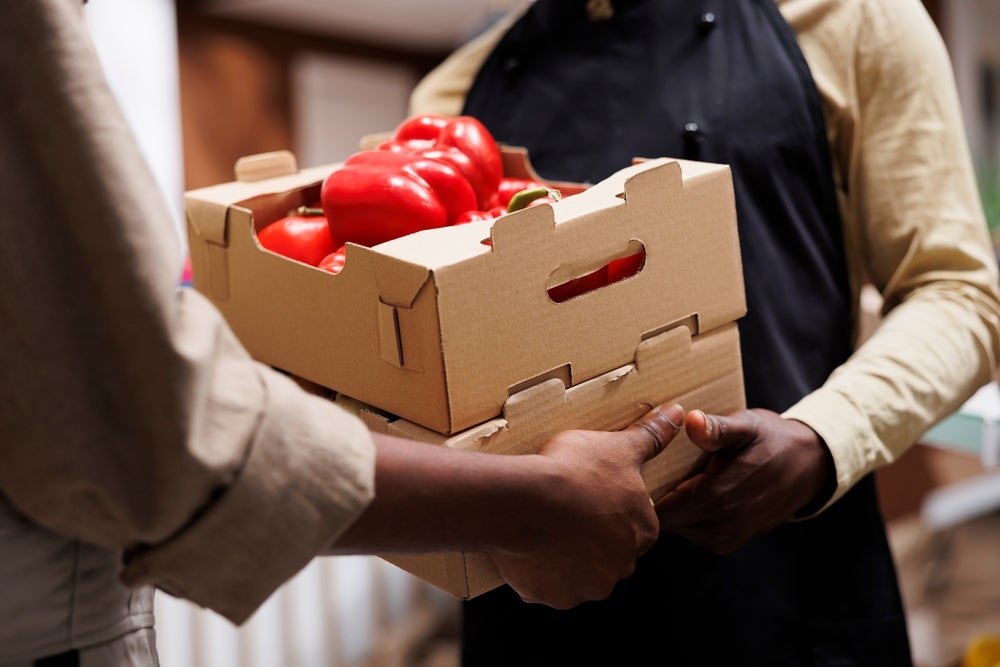Every tonne of grain, oilseed, sugar or fertiliser represents months of fieldwork and capital at risk. The journey from storage to export subjects goods to moisture swings, rough handling, dust, pests and long stretches without supervision.
Choosing the right bulk commodity packaging—and using it well—can turn a vulnerable shipment into a reliable one.
The following tactics focus on what most reduces post-harvest losses while maintaining flow, safety and compliance.
Control moisture, movement and contamination
Moisture is the chief enemy of cereal and feed cargoes. It drives mould, caking and off-odours, and it triggers the “diode effect” that makes powders flow one day and bridge the next. Start with the product’s water activity and route climate, then select barriers and formats to match.
- Seal out humidity. For hygroscopic goods (sugar, rice, milled flours, mineral premixes), specify FIBCs (bulk bags) with PE or PP moisture-barrier liners. For fine powders, dust-proof seams and inner skirts stop leaks at the stitch line.
- Manage “container rain”. Long ocean moves create condensation as steel boxes pass through temperature bands. Container liners with integrated vapour barriers, proper headspace, and desiccant systems curb dripping and panel sweat. Loading discipline—dry pallets, warm cargo, quick door-close—matters as much as materials.
- Use hermetic control where pests threaten. Hermetic liners and high-barrier films can create a low-oxygen environment that suppresses insects without fumigation, useful for stored pulses and speciality grains.
- Stabilise the load. Stretch hooding, well-sized corner boards and anti-slip sheets keep pallets intact through forklift shock and ship roll. Baffled FIBCs maintain their cuboid form, improving stack stability and container fill.
- Prevent contamination both ways. Food-grade liners for edible oils and syrups, gaskets compatible with expected temperatures, and clean discharge hardware reduce taint and cross-contamination. For dusty, potentially combustible powders, choose the correct electrostatic protection (FIBC Types B, C or D) and follow site earthing rules.
Pick the right format and engineer for flow
No single pack solves every route or product. The decision is a trade-off between barrier, strength, filling speed and the last metre of use at the mill or feed plant.
- FIBCs for scale and speed. Woven polypropylene bodies offer a high strength-to-weight ratio. Liners protect against moisture; conical bases and large discharge spouts aid complete emptying. Where dust ignition risks exist (flour, starch), specify antistatic Types B/C/D as appropriate.
- Valve sacks and paper sacks for high-throughput filling. Multi-wall kraft paper sacks with glued valve sleeves fill fast and stack neatly. They suit milled grains, premixes and feeds where breathability helps. If barrier is non-critical, paper-only constructions simplify recycling at destination.
- Woven PP sacks for rugged handling. Coarse cereals and pulses travel well in woven PP with easy-open stitching. Laminated versions improve print and scuff resistance for long, dusty journeys.
- IBCs and drums for liquids. Intermediate bulk containers (IBCs) with food-grade bottles manage edible oils and syrups; lined steel or plastic drums serve smaller lots. Select valve materials and vents for expected headspace and temperature swings.
Flow behaviour often determines whether a bag empties in 30 seconds or 10 minutes.
- Design the product path. Smooth inner liners, low-friction coatings and correctly sized spouts prevent arching. Iris valves and dust-tight quick-release gear keep discharge under control.
- Set realistic opening torques and tear paths. Starters on tear tapes, corner notches on films and grips sized for gloved hands reduce spillage at the user end.
- Vent or seal by need, not habit. Fresh onions and potatoes thrive in ventilated sacks; milled products do not. Use breathability or barrier with intention.
Traceability must survive rough journeys. High-contrast print, abrasion-resistant inks and protected windows for batch codes, barcodes or RFID ensure loads remain audit-ready after weeks in transit. For fertilisers and micronutrients, ensure hazard diamonds and transport marks remain legible for inspections.
Build sustainability, safety and compliance into the spec
The most credible improvements in agricultural packaging reduce waste and simplify end-of-life without compromising protection.
- Design for recovery at destination. Where possible, specify mono-material constructions—PP bodies with PP liners, paper sacks without laminated films when barrier isn’t essential—so receivers can recycle locally. Detachable liners help sorting. Some exporters now run FIBC take-back for inspection, repair and certified reuse cycles.
- Lightweight with testing, not hope. Reducing fabric weight or film gauge lowers resin and freight impacts only if drop, burst and compressive tests pass under realistic humidity and temperature cycling. Field trials should confirm lab data before broad rollout.
- Reduce chemical controls through good practice. Clean silos, sound pallets, intact closures and hermetic storage reduce reliance on routine fumigation. Reserve treatments for verified risk rather than masking basic hygiene issues.
- Respect limits across the logistics chain. Over-stacking and overweight containers increase seam creep, pallet crush and burst failures. Design to the pallet footprint and container weight ceilings; validate with vibration and compression tests that mimic your exact route.
- Meet—and document—the right standards. For food contact, follow applicable regional rules and Good Manufacturing Practice with material declarations on file. Some commodities and additives require UN-certified packaging and explicit transport markings. Ammonium nitrate blends, for example, demand attention to compatibility, ventilation and temperature controls.
- Measure what matters. Track loss drivers by route: “burst”, “moisture”, “infestation”, “taint”, and “handling damage”. Monitor liner integrity failures, complaint rate per million units, recovery/reuse rates, and time-to-empty at receivers. These indicators guide whether to upgrade liners, change seam construction, move to baffled FIBCs, or adjust palletisation.
Practical checklist for packaging teams
- Define moisture, dust and electrostatic hazards by commodity and route; select liners, seams and FIBC type accordingly.
- Choose formats that fit the filling line: valve sacks for speed, FIBCs for scale, container liners for long ocean legs, IBCs/drums for liquids.
- Engineer for flow: spout geometry, liner friction, iris valves and dust control to cut clean-down time at receivers.
- Prevent container rain: dry cargo and pallets, rapid door-close, vapour-barrier liners and tuned desiccant plans.
- Standardise graphics and traceability windows; keep codes readable after abrasion and condensation.
- Specify mono-material, recyclable packaging where product safety allows; plan recycling or reuse at destination.
- Validate with real-world testing: humidity cycling, drop, burst, vibration and compression—then lock results into the spec.
Moving goods from silo to ship with minimal loss is a packaging job as much as a logistics one.
Focus on moisture control, load stability, clean discharge and credible end-of-life, and the benefits arrive together: fewer claims, steadier quality, lower total cost and a clearer sustainability story.









